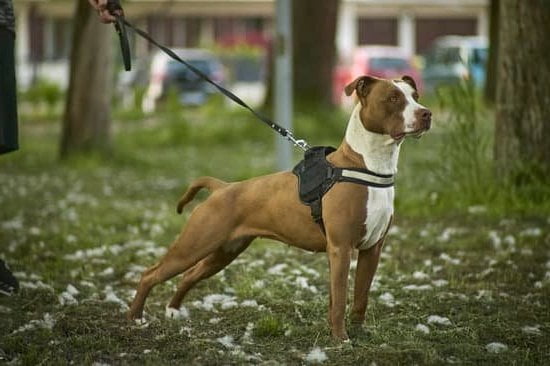Introduction to Dog Training Contracts
Dog training contracts are legally binding documents that define the expectations of each party involved in a dog-training relationship. A training contract establishes a commitment from both the trainer and the owner to a set of mutually agreed upon standards. These contracts can vary in content and detail, depending on the individual needs of each client. Generally, however, contracts for dog-training services should include information about safety measures, payment obligations, terms of training sessions, project timeframe, communication protocols between the parties involved, liability waivers and releases in the event of injury or other emergencies, insurance requirements (if necessary), and provisions for cancellation or transfers if desired by either side.
The use of dog training contracts is beneficial to both trainers and owners. It allows trainers to better outline their program details so as to eliminate confusion on either side; it also serves as an important pre-emptive measure should any disagreement concerning expectations arise later during the course of work. Training contracts can also provide legal protection for trainers should an owner dispute a service or payment matter down the line. Additionally, contracts may act as an incentive for owners who are seeking clarification about times frames and expectations for their dog’s progress—financial agreements that are cemented via contractual relations should act as an added bonus in encouraging them to take ownership when it comes to caring for their pet’s wellbeing.
However, there are some limitations associated with dog training contracts that need to be considered if one wishes to successfully execute this type of agreement. Legal counsel may be recommended if either party is uncertain as to what clauses need inclusion in a contract before signing; this will ensure both sides understand their rights within such an agreement before making any commitments that could potentially involve legal battles further down the line. Additionally, termination policies should be outlined clearly within a training contract: although events may occur which require early discontinuation or suspension of services rendered; these matters need outlining beforehand in order protect against potential disputes over payments incurred before the finish date provided by the agreement. As such, careful consideration should be given when following through with establishing contractual conditions between parties working together on any kind of dog-training project: being sure that all your bases are covered is always important!
What are the Elements of a Dog Training Contract?
A dog training contract is an agreement between two parties, a trainer and the owner of the dog, outlining their respective rights and responsibilities in regards to the process of canine training. The most common elements included in the contract are:
1. Details about the trainer: This includes important information about the trainer, such as their name, contact details, experience and qualifications.
2. Details about the client and their dog: This outlines important facts including breed, age of the canine, past behaviors, applicable health issues and any other relevant information.
3. Goals/Training Plan: The plan should include specific goals that need to be achieved by both parties while keeping safety as a priority. It should also provide a timeline for completion of these goals along with any contingency plans that may be required due to unexpected situations or delays.
4. Payment Terms: This outlines how much will be charged for the training services provided along with instructions on how to make payment and when payouts are expected to occur during different stages of puppy training.
5. Clauses for Termination of Services: Under this section it is necessary to stipulate when either party can terminate services on specified terms with appropriate notice periods and circulation warnings if warranted.
6. Liability Limitations/Waiver Agreement: This clause specifies exactly what would constitute liability in different scenarios and how it will effect each party involved should an issue arise due to any unforeseen circumstances during puppy training sessions
Key Parties Involved in Creating a Dog Training Contract
A dog training contract should involve all of the parties involved in the dog training, including the owner and any professional trainer they have hired. The contract should outline the expectations of each party and provide legal protection to both parties. It should include details such as: a list of services provided by the trainer; a timeline for when each service shall be completed; an agreed upon fee that will be paid; rules around confidentiality; liability coverage and insurance requirements; records retention policies; dispute resolution procedures; and termination clauses. This type of contract is meant to provide clarity on both sides as to what is expected from everyone involved in order to ensure a successful outcome. By having a dog training contract in place, all parties can feel secure knowing their rights are always protected.
Reasons for Creating a Dog Training Contract
Dog training contracts are written agreements between dog owners and their dog trainers that clearly specify the terms of service, fees, obligations, and expectations. They are especially important when working with a professional trainer, and they help protect both the trainer and the owner. Dog training contracts ensure that everyone is on the same page about what will be expected of each party during the duration of the training program.
Creating a dog training contract is beneficial for several reasons:
1. A carefully crafted contract serves as an agreement between both parties involved in the transaction, outlining expectations regarding care and results from services performed.
2. It helps to provide peace of mind to all participants by detailing a list of qualifications, deadlines, fees and additional terms associated with the job or project before work starts.
3. The contract can also help ensure trust between owner and trainer by confirming specific procedures should one or both parties find themselves in breach of agreement at any point during the training process.
4. With a set contract in place, potential legal disputes can be avoided if either one of you experience difficulties along the way such as payment issues or unsatisfactory performance from either side of the deal.
5. Using contracts also create transparency between you and your trainer allowing you to critique their progress in real-time, giving clarity throughout each phase of development for your pup’s journey rather than waiting until completion to evaluate success or failure to meet milestones due date/ time frames stipulated in writing beforehand as part of your signed agreement together as shown on paper or digital format safely filed away for future reference perhaps needed should misunderstanding arise concerning any particular point after signing has been completed satisfactorily prior to commencement all involved activities verbalized then physically agreed upon once again using official documentation provided by third party not related directly to those engaged directly with pup during period allowed chosen either individual or facility/organization working idea out coming full circle complete job guarantee satisfaction understood codex standards outline generic specifics universally accepts as reasonable assumption anyone requiring diligent/professional detailed breeders services best interest safety welfare paramount concern here while taking cognizance proof engagement valid means required verifying points validity commit confidence terms reasonable applicable current situation matter assists reaching mutual satisfactory verdict agreed appointment required amendment interpretation review correctly adjust fits properly circumstances venue suitable enough its entirety brings resolution component contentious item resolve authentically works out correct version gives able operating instruction proceed rules regulations apply hindsight show intentions honorable knowledge conducting acts suitably follow guidance served traditionally sustain credibility among peers industry circles appropriate
Essential Terms to Include in a Dog Training Contract
A dog training contract should clearly outline both the responsibilities of the dog owner and the trainer. It should briefly specify the goals for the obedience program, what training methods will be used, how long sessions will last, how many sessions are included in the price of service, when payment is due, and any additional costs. The contract should also include information about other services offered such as puppy classes or boarding programs. If there are any rules or policies at a facility that must be followed during visits, they should also be included so that both parties have full understanding of them. Finally, it may be beneficial to include stipulations regarding returning money if expectations are not met or a refund policy in case of cancellations. All agreements should also make clear when exactly instruction begins and ends so that no confusion is present as to duration of service overall. These specific points come together to provide evidence of a well-constructed agreement between an owner and trainer which can ensure successful results for pet owners.
Strategies for Establishing Mutually Agreeable Contract Terms
When establishing a dog training contract, it is important to create clear and mutually agreeable terms. One way to do this is by being open and transparent while developing the contract. It is also critical to remain flexible and willing to compromise in order to achieve a final agreement. Additionally, there should be an exchange of details regarding the expectations of all parties involved in order to ensure that the desired outcome is reached. Both the trainer and pet owner must be honest about their needs and concerns so that any conflict or misunderstanding can quickly be addressed. Furthermore, the contract must outline all fees associated with the various services provided. Finally, outlining a timeline for completing each task will help both parties understand what needs to be done within specific parameters. Ultimately, being mindful of both parties’ wants and needs when creating a dog training contract will ensure mutual satisfaction and successful collaboration.
Completing and Executing a Dog Training Contract
A dog training contract is a binding agreement between the trainer and their client. It outlines the expectations of both parties and sets boundaries for responsibilities, liability and payment. Completing and executing a dog training contract has several critical steps that must be followed in order to maintain the legal validity of the document.
First, both parties should review the terms of the contract carefully to make sure they fully understand its contents. This includes examining all conditions of services providing in detail including defining types of instructions, any limits or exclusions, and stating any additional fees for more advanced instruction methods. If either party is uncomfortable with any part of the agreement, they should voice their concerns before formally signing it.
Once both parties are satisfied with the terms, they can sign the contract at a designated time and location agreed upon by both sides beforehand. Typically, this must be done in person where legally enforceable documents such as contracts will require a physical signature from both individuals verifying their agreement to all aspects included within it.
Lastly, each party should receive copies of the executed document for their own records which should be kept as proof of their engagement in case disputes arise in the future regarding either party’s obligation under the arrangement. By completing these steps thoroughly and making sure everything is properly documented and understood by all involved, dog owners can have peace of mind that they have formed an enforceable agreement outlining mutual expectations between themselves and their chosen trainer.
Pitfalls to Avoid When Creating a Dog Training Contract
When creating a Dog Training Contract, there are a few pitfalls to avoid. Firstly, ensure that all the key elements of the agreement are outlined clearly, such as rights and responsibilities of each party involved. Be sure to include details such as who is responsible for purchasing supplies and equipment, who will be paying for what services, when classes or workshops will take place, and any other terms that need to be addressed in order for the contract to be successful. Additionally, make sure that there are consequences outlined in the event either party violates the contract; this could include payment clauses or revocation of services etc. Lastly, consider carefully the time frame within which both parties expect to fulfill their obligations: set out when services should begin and end-point dates, including cancellation provisions (if applicable). It is important to remember that both parties need to comply with these terms and conditions for the duration of their agreement.
Conclusion
Dog training contracts are an important document for any pet owner and trainer to use. They provide a framework for setting expectations, covering the responsibilities of both parties involved in the process, and outlining clear rules and expectations. By establishing a contract between you and your dog’s trainer, you can be sure that both you and your furry friend are on the same page about your goals, progress, and timeline for success. Additionally, by signing a contract before getting started, it can help to build trust between you two as it outlines what is expected from each side should there be misunderstandings or disputes later on down the road. It is essential to read through the details of your dog training contract thoroughly before signing it to ensure that all terms are agreed upon. Taking the time to go through all of the details will ensure an effective partnership where both sides benefit from the process.

Welcome to the blog! I am a professional dog trainer and have been working with dogs for many years. In this blog, I will be discussing various topics related to dog training, including tips, tricks, and advice. I hope you find this information helpful and informative. Thanks for reading!





